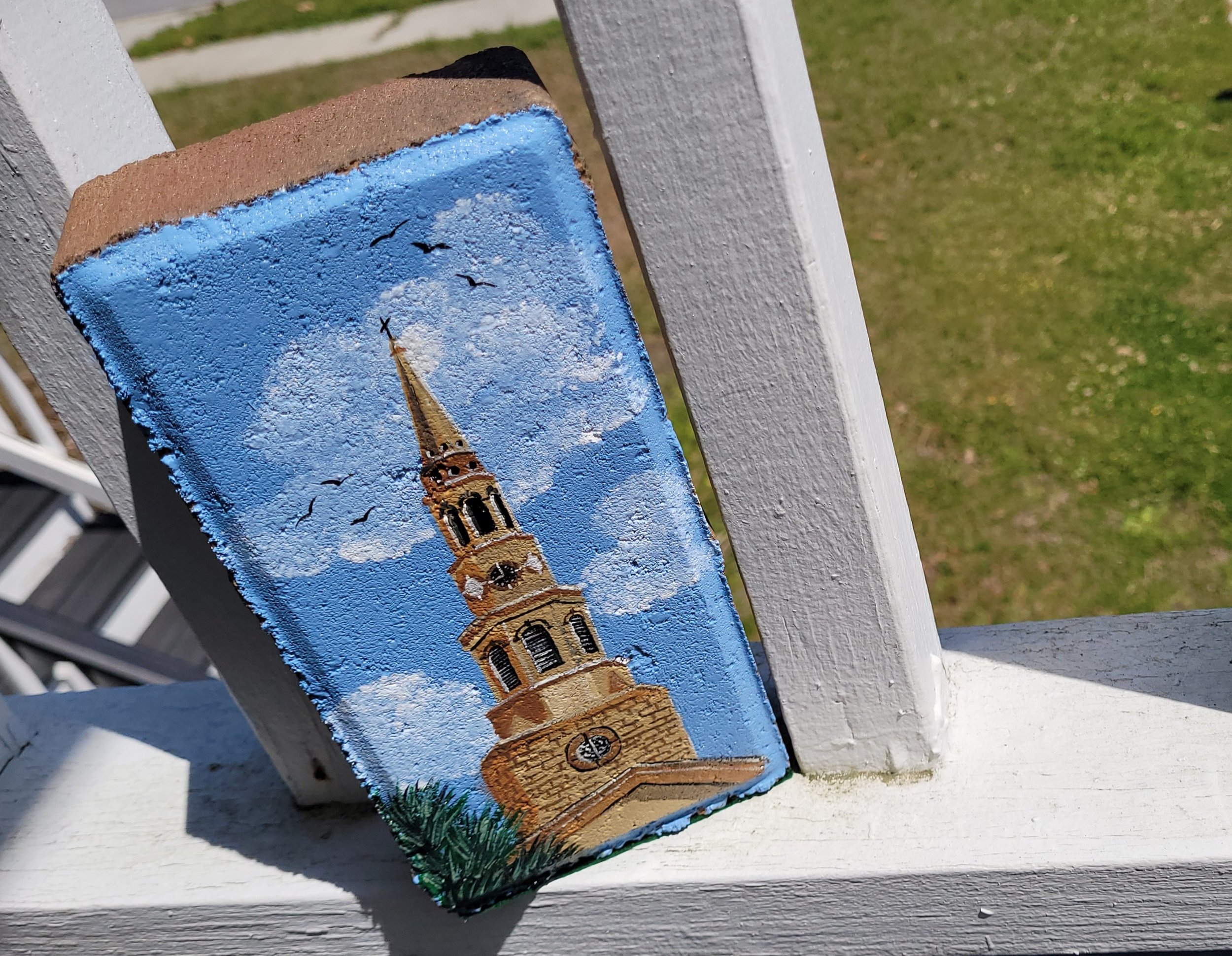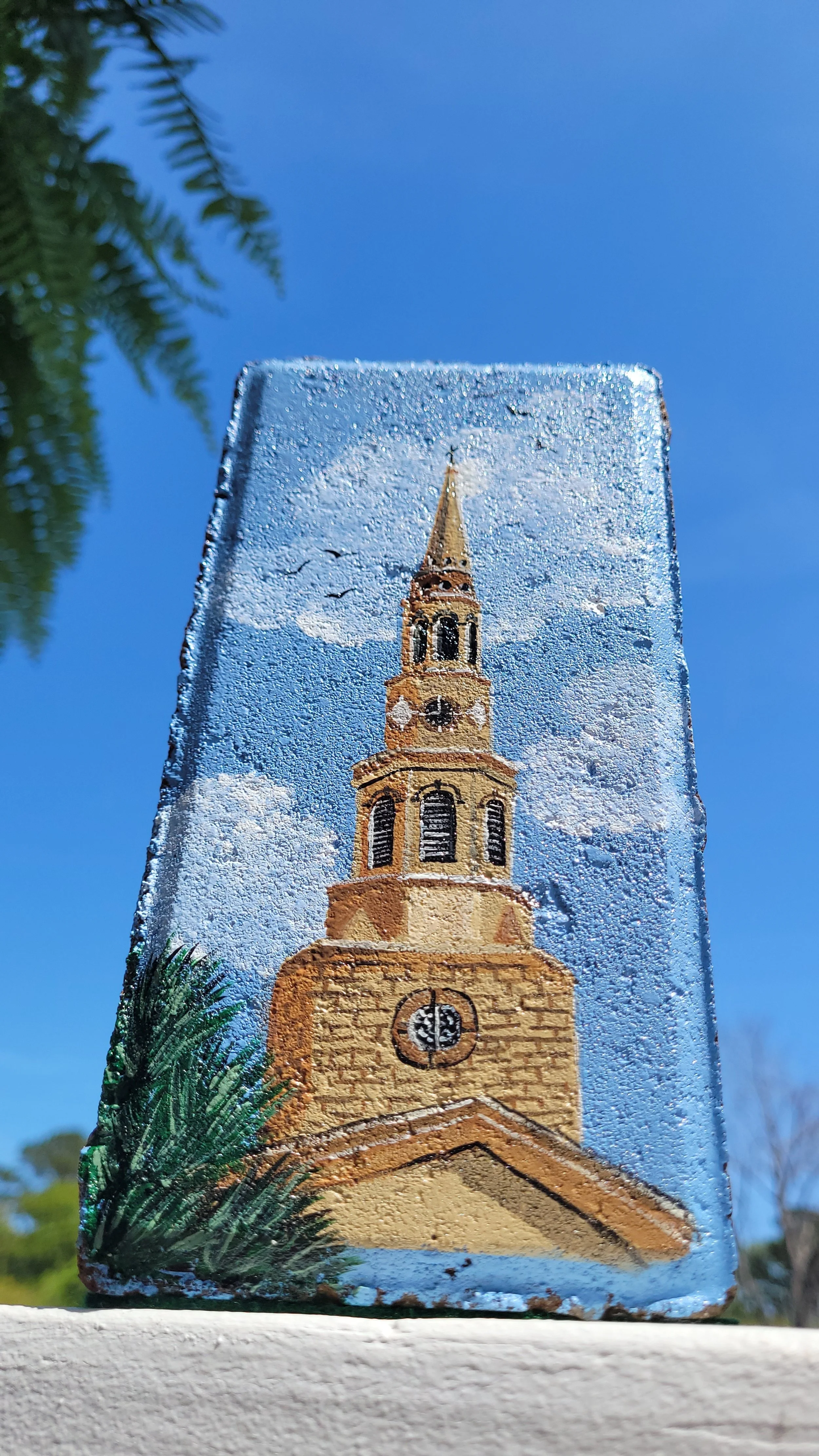
Shop & Such
Aenean lacinia bibendum nulla sed consectetur. Donec ullamcorper nulla non metus auctor fringilla. Duis mollis, est non commodo luctus, nisi erat porttitor ligula, eget lacinia odio sem nec elit. Donec id elit non mi porta gravida at eget metus. Cum sociis natoque penatibus et magnis dis parturient montes, nascetur ridiculus mus.
St. Philip's Church Paver Stone
St. Philip's Church Paver Stone
- The only church in Charleston that literally changes the flow of traffic!
- Hand-painted Paver Stone
- Each piece is one of a kind created with acrylic paint
A Brief History of St. Philips Church
Up the coast a little way, located in Hampton, Virginia, sits St. John Episcopal Church established in 1610. While there were older Christian congregations, this was the first time that English was the primary language spoken. St. Philip’s Episcopal in Charleston would become the second.
A group of settlers would disembark near the now-defunct Albemarle Point in the early 1670s. They would eventually make a life for themselves between the Ashley and Cooper Rivers around 1679. Forming a more religious coalition called “the English Church,” they were officially known as St. Philips.
While the congregation first gathered in 1680, the first physical structure was built between 1681 and 1691. Between Broad and Meeting Streets, Originall and Millicent Jackson donated four acres of land where the structure was erected. Made of black cypress with a brick foundation, this “large and stately” church would sit on this spot for nearly two decades until a hurricane would irreparably damage the original building.
This is where things get a little fun…
Where St. Philip’s sat at the time would become the future site of another iconic church named St. Michael’s. Just a couple blocks over on Church Street, a new church under the name St. Philip’s was being constructed in 1710 and completed in 1723. But even this structure wasn’t long for this world as it burned down in 1835. It was rebuilt on the same spot (this time) and neared completion in 1838 – the year of the great Charleston Fire!
Due to its size, the city was forced to design Church Street with a large curve around the projecting tower and steeple. The towering steeple was designed by E.B. White and added to the church in 1850. Between 1893 and 1915, a beacon was attached to the steeple and was utilized as a lighthouse to guide ships in the Charleston Harbor.
Many prominent priests would preach from the pulpit. From Reverend Thomas Frost to John Wesley. From George Whitfield to the founding President of the College of Charleston, Rev. Dr. Robert Smith. George Washington himself even worshiped there at one point.
Famous people don’t just flock to this gorgeous construction inside, however. Vice President of the United States, John C. Calhoun, President of South Carolina from 1778-1779, Rawlins Lowndes, and playwright Dubose Heyward of “Porgy” fame are all buried in the graveyard surrounding the church. Being such an important part of Charleston’s history, it wasn’t even added to the National Register of Historic Places until 1973.
From 1993 to 1994 the church would go through its most recent restoration, the congregation worships in the building as it stands to this day.
Despite so many disasters -- the original church bells being melted to create Confederate cannons, earthquakes nearly destroying the building, Hurricane Hugo causing 4.5 million dollars in damage – St. Philip’s still stands today as a reminder of the resilience of Charleston and the Lowcountry.
~ Brandon L. Joyner





















